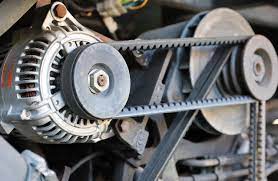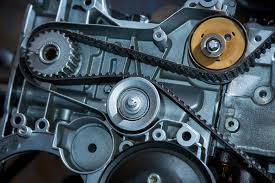The process of V-Belt maintenance requires discipline. However, it ensures optimum belt drive performance, effective belt operation, and a long service life. When a regularly scheduled maintenance program is implemented, belt drives will run trouble free for a long time.
General rules for preventing V-Belt failures:
1. Use a sheave laser alignment tool to properly align sheaves. The use of a typical straight edge or string will not yield optimal life from your V-Belts.
2. Use a tension meter to measure deflection and tension of a V-Belt. To determine requirements for deflection and tension, consult manufacturer recommendations. As a warning, over-tension of belts is the number one cause of V-Belt failure. A 10% over-tension of V-Belts can result in a reduction of bearing life by 10%.
3. Identify over-tension by using infrared.
4. Upon installation, check new belts for proper tension after 24 hours of operation. Failure to complete this inspection could result in V-Belts not meeting expectations.
5. Tighten all bolts using a torque wrench according to proper torque specifications.

Failure modes on V-Belt Drives
Tension loss, caused by:
• Weak support structure
• Lubricant on belts
• Excessive sheave wear
• Excessive load
Tensile break, caused by:
• Excessive shock load
• Improper belt handling and storage prior to installation (crimping)
Belt cracking, caused by:
• Sub-minimal diameter
• Extremely low temperature at start-up
• Extended exposure to chemicals or lubricants
Proper Storage of V-Belts
• Belts should be stored in a cool and dry environment (less than 85° F and 70% relative humidity). Ideally, they should be stored in an area that does not receive direct sunlight.
• V-Belts may be hung on a wall rack for storage purposes. They should be hung on a saddle or diameter at least as large as the minimum diameter sheave recommended for the belt cross section.
• If stored at the proper temperature and relative humidity, belts may be stored for up to six years.
• If storage temperature exceeds 85°F, the storage limit for normal service performance is reduced by one half for each 15°F increase in temperature. Belts should never be stored at temperatures above 115°F.


